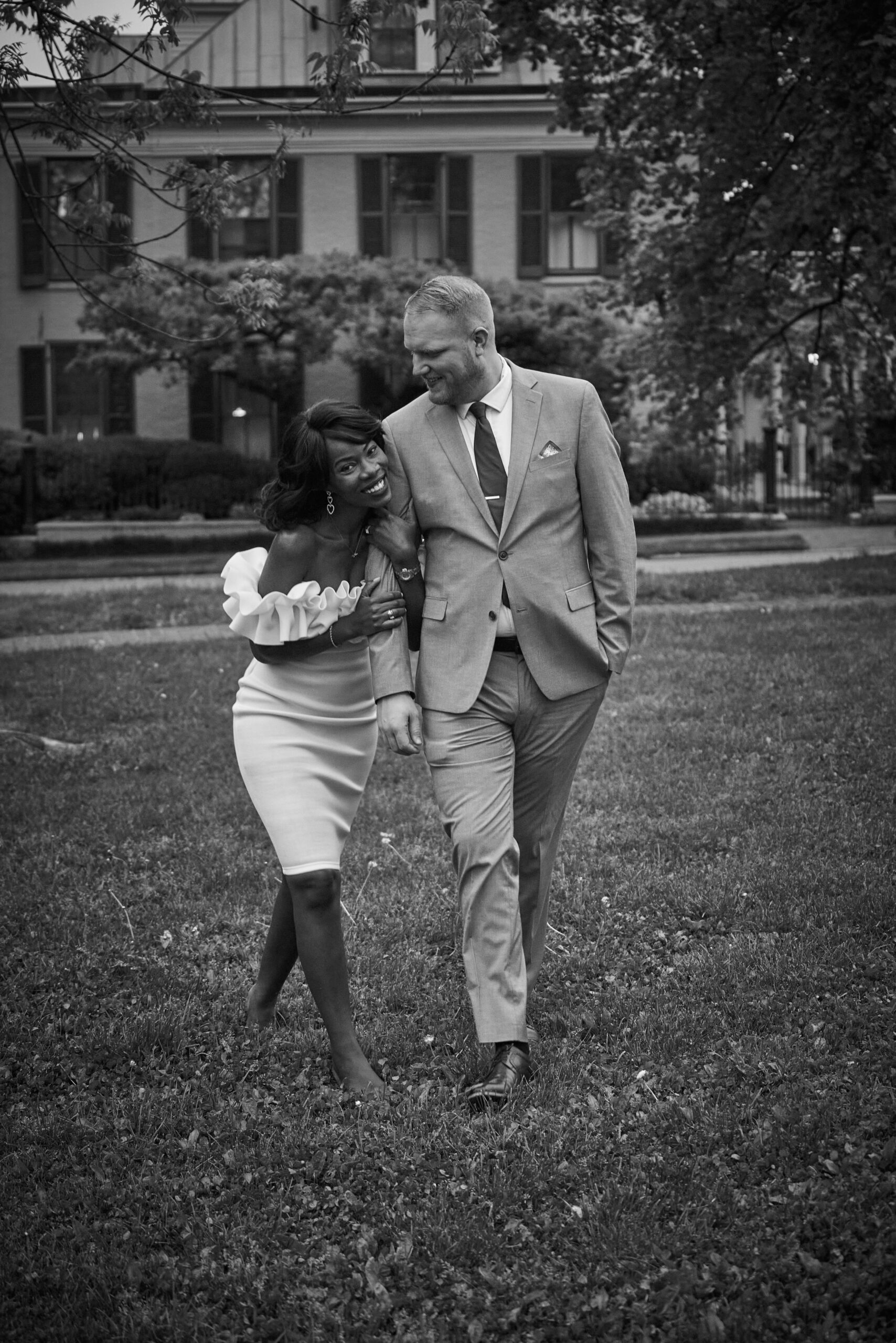Falling in love and getting married is one of life’s most meaningful experiences. For international couples with one spouse being a U.S. citizen or lawful permanent resident, it also opens up the chance to share a life together in America on a long-term basis. Through the marriage-based green card process, foreign nationals can gain lawful permanent residence and embark on their journey to build a future stateside.
Advertisements
In this comprehensive guide, we will explore the ins and outs of obtaining a green card by marrying a U.S. citizen or lawful permanent resident. From eligibility requirements and application procedures to interviews, conditional residency stages and ultimately becoming a permanent resident – we break down the essential steps every step of the way.
Marriage-Based Green Card Eligibility
A genuine marriage to a U.S. citizen or lawful permanent resident green card holder is the foundation for sponsorship. To qualify, certain criteria must be met:
- The marriage must be legally valid and recognized in the state or country where the wedding took place. Common law marriages may also be eligible depending on state rules.
- Couples must meet the legal definition of being married under immigration law, cohabitating together with a committed spouse-spouse relationship. Fraudulent marriages solely for green cards are illegal.
- The foreign spouse cannot already hold permanent residence or U.S. citizenship status. They must be residing in their home country or in the United States under a nonimmigrant visa.
- If married less than 2 years at the time of filing, the couple’s petition will result in conditional permanent residence status for 2 years before removing conditions.
- Divorced or separated spouses are not eligible, nor are fiancé(e)s or partners in civil unions rather than legal marriages recognized under state law. Spouses must remain married throughout the process.
- Neither spouse can have been part of a prior fraudulent marriage aimed at circumventing immigration rules within the last 10 years.
Filing Form I-130 Petition for Alien Relative
The first step is the U.S. citizen or permanent resident spouse filing Form I-130 with U.S. Citizenship and Immigration Services (USCIS) proving the legal marital relationship exists. Requirements include:
Advertisements
- Completed I-130 form with details about the marriage and residency of each spouse.
- Copies of a valid marriage certificate and spouse’s birth certificates are translated as needed.
- Passport photos and copies of biographical pages for both individuals.
- A filing fee of currently $535 per application.
- Additional documentation can help, like shared lease agreements, bank accounts, utility bills, tax filings, childbirth records, or wedding photos.
Once properly filled and documentary evidence included, Form I-130 establishes a spouse or child’s family ties to sponsor eligibility to immigrate. Processing typically takes 6-8 months upon receipt at USCIS service centers.
After I-130 Approval: Interview Process
Following a successful I-130 petition, the foreign spouse is given an interview date to attend at their local USCIS field office. The interview serves a critical purpose:
Advertisements
- Verifying that the relationship between spouses is genuine and authentic.
- Ensuring the marriage was legally conducted and valid for immigration purposes.
- Screening applicants for any ineligibilities like criminal issues or immigration violations in their background.
- Collecting photos and signatures in person.
Being fully prepared with documentation like wedding book, photos together, shared possessions, communications, financial records and answers to intimate questions will help prove the marriage and immigrant intent are sincere. Successful interviews lead to conditional residency.
Conditional Permanent Residence
When a marriage-based green card is approved, foreign spouses first receive 2 years of conditional permanent residence if married for less than 2 years at the time of application. This conditional status comes with important rights like:
- Authorization to live and work anywhere legally in the United States.
- Eligibility to travel outside the U.S. using advance parole permission and return with a valid green card in hand.
- Ability to apply for family members abroad who may also immigrate as dependents.
- Access to public benefits programs like Medicaid or food stamps if otherwise eligible.
However, to transition past the conditional period, spouses must jointly file Form I-751 Petition to Remove Conditions before the 90-day window prior to the second-anniversary date.
Filing Form I-751 to Remove Conditions
By the 21-month mark as conditional residents, spouses cooperate in completing Form I-751 which requires:
- Updated photos of both spouses together.
- Copies of current lease, utility bills, or bank statements with both names evident.
- State and federal tax returns as proof of continuing financial support.
- Additional evidence can include children’s birth certificates, insurance policies, retirement accounts or commingled assets.
The goals are to show immigration authorities:
- The relationship is still valid and ongoing as a marriage.
- Spouses have not divorced or legally separated during the conditional residency period.
If approved after a non-adversarial interview, immigration bars are lifted and the foreign spouse receives a 10-year green card demonstrating unconditional permanent residence. This status can be replaced with new cards every 10 years.
Permanent Resident Benefits Unlocked
Reaching permanent residence signifies a major milestone in legal immigration. Foreign spouses gain rights enjoyed by many U.S. citizens, like:
- Lifetime work authorization without needing an employer sponsor.
- Ability to live and reside anywhere permanently in the United States.
- Eligibility to apply for U.S. citizenship after 5 continuous years holding the green card.
- Can sponsor other eligible family members abroad or domestically for green cards.
- Access to in-state tuition at public colleges and universities in certain states.
- Protection from deportation barring criminal issues or immigration law violations.
- Ability to travel freely with advance permission and re-enter as lawful permanent residents.
Furthermore, permanent residents gain increased access to public assistance programs and financial aid if qualified upon accruing 5 years of residency in the U.S. This status cements stability to fully integrate, work, and settle.
Family Preference Visas for Spouses
While the marriage-based green card offers a direct route for foreign spouses, additional options provide further opportunities after becoming a permanent resident:
- F2A Visa: Spouses and unmarried children (under 21) of lawful permanent residents can apply as preference immigrants with usually 1-2 year wait times depending on country of origin.
- Immediate Relative: Spouses and unmarried children (under 21) of U.S. citizens can file rather than waiting as F2A preference immigrants. This category faces no backlogs.
- Marriage-Based Naturalization: Once permanent residents continuously reside in the U.S. together for 3 years, spouses can apply to naturalize as U.S. citizens as well.
So in summary, regardless of the path to permanent residence—marriage, employment, or refugee status—all roads legally lead to full membership and eventual citizenship for committed immigrant spouses through continued residency.
Successfully building a shared future in America together requires demonstrating to authorities that the spousal commitment remains genuine and ongoing. Compliance with status and nurturing strong family bonds forge the way ahead over the long run. With perseverance, immigration through marriage opens America’s doors.
Frequently Asked Questions
Here are answers to some frequently asked questions about obtaining a green card through marriage:
Q: What prevents fraud or sham marriages solely for immigration benefit?
A: Thorough interviews, requiring extensive documentation of bona fide relationships, penalties if caught plus proving ongoing commitment after are meant to deter fraud while accommodating legitimately married couples.
Q: Can I work while waiting for the papers to be approved?
A: Filing the I-130 establishes authorization to work or study in the U.S. legally until permanent residency is awarded, including during review and interview phases as long as the status is maintained.
Q: What if we divorce after the green card?
A: Divorce after the 2-year conditional period and permanent residency grants means retained status. Divorce beforehand terminates sponsorship eligibility under most marriage-based petitions.
Q: How do I prove our marriage is real?
A: Thoroughly documenting your relationship’s history from how you met through present-day finances, communications, and shared living proof establishes credibility with USCIS officers assessing legitimacy.
Q: Do I need an immigration lawyer?
A: While not strictly necessary, an experienced attorney can provide needed guidance, identify issues proactively, ensure proper forms/evidence are submitted, and represent if complications arise to increase the chances of success in this complex area of immigration law.
By carefully following requirements and exhibiting clear commitment to the lawful marital union, foreign nationals gain access to residency, work authorization and a pathway to citizenship in America through their love and vows exchanged with a U.S. citizen or permanent resident spouse.
Advertisements


